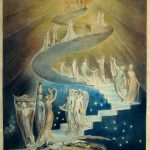ASTROSOPHY VIDEOS WITH ROBERT POWELL
INTERVIEW WITH ROBERT POWELL – FOCUSED ON THE HISTORY OF THE ZODIAC

Video Description
Astrology interview focusing initially upon the history of the zodiac: What was the original scientific definition of the zodiac, now known as the sidereal zodiac? And who originally defined the zodiac? And to which countries was the zodiac transmitted?
Also, how the original sidereal zodiac, which was defined by the Babylonians, was superseded by a new definition of the zodiac by Greek astronomers, known as the tropical zodiac, which has now become standard throughout much of the world, with the exception of India, where the original zodiac is still used to the present day.
The difference between astronomy and astrology, also the difference between sidereal and tropical approaches to astrology. The precession of the equinoxes—the zodiacal ages. Astrogeographia: correspondences between the stars and earthly locations. The imprint of the entirety of the starry heavens into the human being’s brain at the moment of birth. Each person’s horoscope, mirroring the starry heavens at that moment, is literally imprinted into the brain at the moment of birth. The star of the magi and the precise date of the birth of Jesus. The three magi were the last representatives of the star wisdom of antiquity. Each zodiacal age is correlated with the flourishing of a particular civilization at a certain location upon the earth: the flourishing of the ancient Indian culture during the Age of Cancer; of the ancient Persian culture during the Age of Gemini; of the ancient Egyptian and Babylonian civilizations in the Age of Taurus; of the Greek and Roman cultures in the Age of Aries; of the modern civilization in the Age of Pisces; of the coming Slavic culture in the Age of Aquarius—the awakening of spiritual cultural consciousness and the development of a new culture based on true community.
INTERVIEW WITH ROBERT POWELL – THE SIGNIFICANCE OF DIVINE SOPHIA

Video Description
What is the cosmic birthday? Robert briefly relates something of his biography, indicating how he came to write his Ph.D. thesis on the history of the zodiac. His initial question, stimulated by his interest in the star of the magi, was: How are we connected to the starry heavens? In the course of biographical research, he found, for example, that certain planetary rhythms tend to show up in each individual’s biography. Moreover, it is important not to forget that the Greek word planet was translated from the corresponding Babylonian word meaning “moving star,” as distinct from “fixed star”—the stars providing the background in relation to which the planets are observed to move.
More specifically, the planets are observed to move against the background of the twelve zodiacal constellations: Aries the Ram, Taurus, the Bull, etc. The Greek word zodiac, meaning animal circle, thus offers a framework for the movements of the planets. This framework was first defined scientifically by the Babylonians around 500 BC, who specified twelve 30º zodiacal signs, embedded in the zodiacal constellations bearing the same names, whereby certain prominent stars within the zodiacal constellations were assigned zodiacal longitudes: Aldebaran, the “Bull’s eye” in the middle of the constellation of Taurus the Bull (15º Taurus), Regulus, the “Lion’s heart” in the middle of the first decan of the constellation of Leo the Lion (5º Leo), Antares, the “Scorpion’s heart” in the middle of the constellation of Scorpio (15º Scorpio), etc. These prominent 1st magnitude stars were the primary marking stars defining the zodiac, and the less prominent stars visible in the zodiacal constellations were assigned zodiacal longitudes by the Babylonians through measuring their distances in degrees from the primary marking stars. Robert’s History of the Zodiac offers a complete reconstruction of the ancient Babylonian zodiac.
This epochal work also describes how, when the Babylonian zodiac was transmitted from Alexandria to India in the second century AD, the ancient Vedic division of the sidereal heavens into 28 nakshatras (lunar mansions) was fitted into the twelvefold division of the zodiac by dropping one of the nakshatras, Abhijit, and fitting the remaining 27 nakshatras into the twelve 30º zodiacal signs of the Babylonian zodiac. And when the Babylonian zodiac was transmitted to Egypt, the ancient Egyptian division of the starry heavens into 36 decans was fitted into the twelvefold Babylonian division by assigning three decans, each 10º long, to each of the twelve 30º zodiacal signs of the ancient Babylonian zodiac.
Brief reference is made by Robert to the yearly publication Cosmology Reborn: Star Wisdom (2019)—formerly titled Journal for Star Wisdom (of which Robert was editor for many years)—and the new development in this publication in our time of star wisdom (astrosophy) as an expansion upon the prevailing view of the cosmos to encompass the “big picture” in relation to astrology and astronomy.
In this connection, reference is made by Robert to other levels of existence over and beyond the physical level on which modern science focuses. Here Robert mentions the significance in his life of the work of Rudolf Steiner (1861-1925), a universal genius who developed an extraordinary level of clairvoyance, which enabled him to pioneer spiritual science as an extension of modern science—spiritual science entailing exploration of various levels of existence beyond the physical realm, including cosmic levels of existence, thus providing valuable perspectives on the relationship between the cosmos, humanity, and the Earth as the domain of star wisdom (astrosophy).
Robert then goes on to describe the development through Rudolf Steiner’s clairvoyant faculties of a new form of movement, eurythmy (from the Greek, meaning “beautiful, harmonious movement”). Steiner was able to behold the birth of language from cosmic realms and he could also perceive the gestures associated with the sounds of language, thus giving rise to eurythmy
Robert studied eurythmy for four years in Dornach, Switzerland, at the center established there by Steiner, and then went on to develop choreocosmos (“cosmic and sacred dance”) focusing upon the cosmic and sacral dimensions of eurythmy.
Since 1990, choreocosmos has been a central focus of Robert’s life work—see, for example, Robert's videos regarding Choreocosmos - Cosmic & Sacred Dance.




